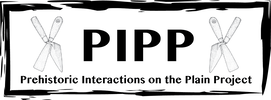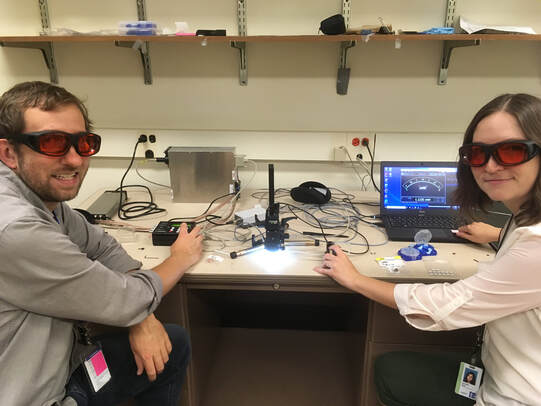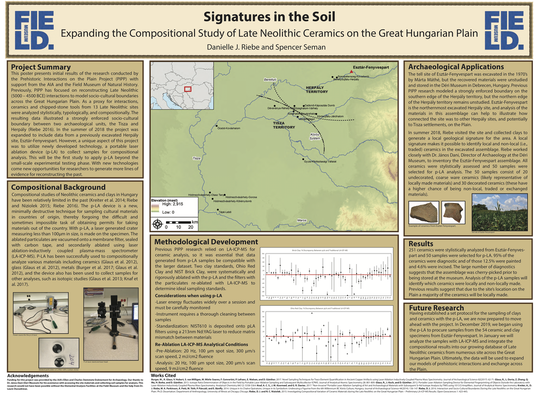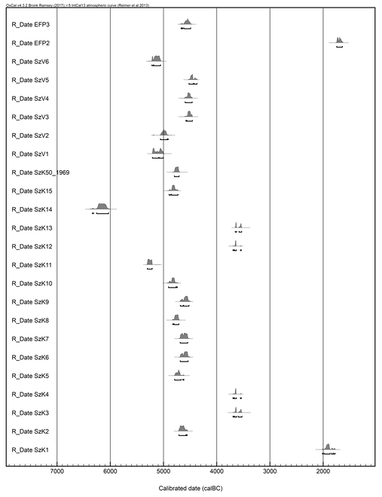2018 – Expanding the Dataset with Esztár-Fenyvespart
|
With support from the Ellen and Charles Steinmetz Endowment Fund for Archaeology (Archaeological Institute of America), in the summer of 2018, Riebe expanded PIPP research by focusing on the northern most excavated Herpály site, Esztár-Fenyvespart. In Phase I of PIPP, stylistic and compositional analyses on ceramics and lithics from 12 sites had illustrated a strongly enforced socio-cultural boundary between the Tisza and Herpály archaeological cultural units on the Great Hungarian Plain during the Late Neolithic (ca. 5,000 – 4,500 BCE). While Tisza sites have been heavily investigated in the past, only a few Herpály sites have ever been excavated. The Herpály tell site, Esztár-Fenyvespart, was excavated in the 1970’s, and the assemblage remained unstudied ever since. In an effort to better reconstruct the interactions between Herpály and Tisza sites during the Late Neolithic, the materials from Esztár-Fenyvespart were inventoried and ceramic samples were selected for compositional analysis.
A unique aspect of this research was the implementation of a new and novel device for compositional sampling: portable laser ablation (p-LA). The p-LA device is a minimally destructive tool for collecting compositional samples from cultural materials, thereby forgoing the difficult and sometimes impossible task of obtaining permits for exporting artifacts. This exploratory project builds upon previous regional compositional studies on the Great Hungarian Plain by using new sampling techniques. The preliminary p-LA results were presented at the 2019 Joint Annual Meeting of the Archaeological Institute of America (AIA) and the Society for Classical Studies (SCS) in San Diego, California. |
|
2018 – Re-dating the Late Neolithic
|
Over the past six years, PIPP has worked to reconstruct multi-scalar patterns of engagement between Late Neolithic (5,000 – 4,500 BCE) Tisza and Herpály cultural units on the Great Hungarian Plain. By conducting multiple types of analyses on ceramics and chipped-stone tools, it has been possible to model a strongly enforced socio-cultural boundary during this time. However, what remains unclear is the chronological sequence in which these regional cultural developments occurred.
With funding from the Rust Family Foundation (RFF-2018-75) in 2018, multiple samples from a single Tisza site (Szeghalom-Kovácshalom) and two Herpály sites (Esztár-Fenyvespart and Szeghalom-Várhely) were selected for radiocarbon analysis in order to better refine the chronological sequence for the region. Samples were sent to the Center for Applied Isotope Studies at the University of Georgia. The initial results were presented at the 84th Annual Meeting of the Society for American Archaeology and a final report was submitted to the Rust Family Foundation. |



